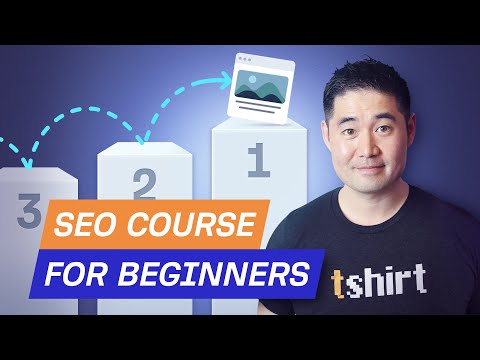
Introduction
Imagine creating content that not only resonates with your audience but also boosts your website’s visibility on search engines. This is the power of content marketing intertwined with a robust SEO strategy. In today’s digital landscape, mastering the synergy between these two elements is essential for businesses aiming to enhance their online presence, attract more visitors, and convert them into loyal customers. This article delves into the essentials of leveraging content marketing for SEO success, offering actionable insights and practical tips to elevate your strategy.
Content marketing and SEO (Search Engine Optimization) are the dynamic duo of digital marketing. When used together effectively, they can dramatically improve your brand’s online visibility and drive more organic traffic to your site. Let’s explore how you can leverage these powerful tools to their fullest potential.
The Importance of Content Marketing in SEO
Understanding the Basics
Content marketing involves creating and distributing valuable, relevant, and consistent content to attract and engage a clearly defined audience. When aligned with SEO principles, it ensures your content is not only engaging but also discoverable by search engines. This means more organic traffic, better search engine rankings, and ultimately, higher conversions.
SEO, on the other hand, is the process of optimizing your website and its content to rank higher in search engine results pages (SERPs). It involves various techniques, including keyword research, on-page optimization, link building, and technical SEO.
How Content Marketing and SEO Work Together
The relationship between content marketing and SEO is symbiotic. High-quality content attracts backlinks, increases time on site, and reduces bounce rates, all of which are factors that search engines consider when ranking websites. Conversely, good SEO practices ensure that your content is visible to the right audience at the right time.
By integrating SEO into your content marketing strategy, you can create content that ranks well in search engines and resonates with your audience. This holistic approach can lead to increased visibility, more organic traffic, and ultimately, higher conversions.
Key Statistics
To illustrate the power of content marketing and SEO, consider these statistics:
- 93% of online experiences begin with a search engine, making SEO critical for attracting organic traffic.
- Companies that blog receive 97% more links to their websites, highlighting the importance of content marketing for SEO.
- Businesses using content marketing see 6 times higher conversion rates than those who don’t, emphasizing the effectiveness of this strategy in driving sales.
These statistics underscore the importance of combining content marketing and SEO to achieve digital marketing success.
Crafting High-Quality, SEO-Optimized Content
Keyword Research and Optimization
Keyword research is the foundation of any successful SEO strategy. It involves identifying the words and phrases your target audience uses to search for information related to your products or services. Here’s how to conduct effective keyword research:
- Identify Primary Keywords: These are the main keywords that directly relate to your content topic. For example, if you’re writing about “content marketing,” your primary keyword might be “content marketing strategies.”
- Find Secondary Keywords: These are related terms that add context and depth to your primary keywords. For instance, secondary keywords for the above example might include “content marketing tips” and “content marketing examples.”
- Use Long-Tail Keywords: These are longer, more specific phrases that are less competitive and highly targeted. For example, “how to create a content marketing strategy” is a long-tail keyword.
Several tools can help with keyword research, including Google Keyword Planner, Ahrefs, and SEMrush. These tools provide valuable insights into search volume, competition, and related keywords.
Creating Engaging and Valuable Content
High-quality content is the cornerstone of any successful content marketing strategy. It should be informative, engaging, and provide real value to your audience. Here are some types of content that can help you achieve these goals:
- Blog Posts: Write comprehensive, well-researched articles that cover topics in-depth. For example, a blog post on “how to create a content marketing strategy” could include step-by-step instructions, tips, and examples.
- Infographics: Visual content that simplifies complex information. Infographics are highly shareable and can help you attract backlinks, which are important for SEO.
- Videos: Engaging videos that explain, entertain, or demonstrate. For example, a video tutorial on “how to create a content marketing strategy” can attract viewers who prefer visual content over written text.
When creating content, focus on addressing the needs, pain points, and interests of your audience. This will make your content more engaging and increase the likelihood that it will be shared and linked to by others.
Optimizing On-Page Elements
On-page optimization involves optimizing various elements on your website to improve its visibility in search engine results. Here are some key on-page elements to consider:
- Title Tags: The title tag is one of the most important on-page SEO elements. It should include your primary keyword and be under 60 characters. For example, “How to Create a Content Marketing Strategy | [Your Brand]”.
- Meta Descriptions: The meta description provides a brief summary of your content. It should be compelling, include secondary keywords, and be under 160 characters. For example, “Learn how to create a successful content marketing strategy with these step-by-step tips and examples.”
- Headings: Use H1 for titles, and H2, H3 for subheadings, incorporating keywords naturally. This helps search engines understand the structure of your content and its relevance to the search query.
- Internal and External Links: Linking to other relevant pages on your site (internal links) and authoritative external sources (external links) can improve your content’s SEO. Internal links help search engines crawl your site more effectively, while external links demonstrate the credibility of your content.
By optimizing these on-page elements, you can improve your content’s visibility in search engine results and attract more organic traffic.
Building a Content Strategy for SEO
Setting Clear Goals
Before you start creating content, it’s important to define what you want to achieve with your content marketing efforts. Here are some common goals:
- Increasing Organic Traffic: Attracting more visitors to your site through search engines.
- Improving Search Engine Rankings: Achieving higher positions in search engine results pages (SERPs) for target keywords.
- Generating Leads: Capturing contact information from potential customers to nurture them into paying clients.
- Enhancing Brand Awareness: Increasing the visibility and recognition of your brand.
Setting clear goals will help you measure the success of your content marketing efforts and make data-driven decisions to improve your strategy.
Creating a Content Calendar
A content calendar is a schedule of the content you plan to publish over a specific period. It helps you stay organized, ensure a consistent posting schedule, and align your content with relevant dates, events, or seasonal trends. Here’s how to create an effective content calendar:
- Brainstorm Content Ideas: Start by brainstorming a list of content ideas that align with your goals and target audience’s interests.
- Prioritize Topics: Prioritize topics based on their relevance, search volume, and potential impact on your goals.
- Schedule Publication Dates: Assign publication dates to each topic, ensuring a consistent posting schedule. For example, you might publish a new blog post every Monday and a video every Wednesday.
- Plan Content Types: Diversify your content types to keep your audience engaged. For example, you might alternate between blog posts, infographics, and videos.
- Include Key Dates: Incorporate relevant dates, events, or seasonal trends into your content calendar. For example, you might create content around major holidays or industry events.
By creating a content calendar, you can ensure a steady stream of high-quality content that resonates with your audience and supports your SEO goals.
Measuring and Analyzing Performance
To understand the effectiveness of your content marketing efforts, it’s important to measure and analyze performance. Here are some key metrics to monitor:
- Organic Traffic: The number of visitors who find your site through search engines. This is a key indicator of your SEO success.
- Bounce Rate: The percentage of visitors who leave your site after viewing only one page. A high bounce rate may indicate that your content is not engaging or relevant to your audience.
- Average Session Duration: The average amount of time visitors spend on your site. A longer session duration indicates that visitors find your content valuable and engaging.
- Conversion Rates: The percentage of visitors who complete a desired action, such as filling out a contact form or making a purchase. This is a key indicator of your content’s effectiveness in driving sales.
Regularly reviewing these metrics helps you understand what’s working and where improvements are needed. Use this data to make informed decisions and refine your content marketing strategy.
Case Study: Success with Content Marketing and SEO
One notable example is Neil Patel, a renowned digital marketer. By consistently producing high-quality content and optimizing it for SEO, Neil has grown his blog into one of the most visited marketing websites in the world. His strategic use of keywords, engaging content formats, and thorough analysis of performance metrics are key factors in his success.
Neil’s blog covers a wide range of topics related to digital marketing, including SEO, content marketing, social media, and more. Each post is well-researched, informative, and optimized for search engines. By providing valuable insights and practical tips, Neil has built a loyal audience and attracted numerous backlinks, further boosting his SEO.
His success demonstrates the power of combining content marketing and SEO to achieve digital marketing goals. By following a similar approach, you can enhance your online visibility and drive more organic
Key Takeaways
- Integration is Key: Integrate SEO principles into your content marketing strategy from the outset to ensure your content is both engaging and visible to search engines.
- Quality Over Quantity: Focus on creating high-quality content that addresses the needs and interests of your audience, rather than churning out large volumes of content.
- Consistency Matters: Maintain a consistent posting schedule and diverse content types to keep your audience engaged and improve SEO performance.
FAQs
1. How often should I update my content? Regularly updating your content can improve its relevance and SEO performance. Aim to refresh your evergreen content at least once every six months.
2. Is social media important for SEO? While social signals themselves may not directly impact SEO rankings, social media can amplify your content’s reach and attract more visitors to your site, indirectly benefiting your SEO efforts.
3. How long does it take to see results from content marketing and SEO? The timeline for seeing results can vary based on factors such as your industry, competition, and the quality of your content. Generally, significant improvements in SEO can take several months to a year.
4. What role do backlinks play in SEO? Backlinks are crucial for SEO as they signal to search engines that your content is valuable and authoritative. Focus on earning high-quality backlinks from reputable sites in your industry.
Conclusion
Effective content marketing is not just about creating compelling content—it’s about ensuring that content reaches and engages your target audience. By incorporating SEO best practices into your content strategy, you can enhance your online visibility, attract more organic traffic, and ultimately, achieve your business goals. Remember to continually evaluate and refine your strategy based on performance data and industry trends to stay ahead in the competitive digital landscape.
By mastering the art of content marketing for SEO, you can position your brand as a trusted authority in your industry, driving sustained growth and success. Start implementing these strategies today to unlock the full potential of your digital marketing efforts.




